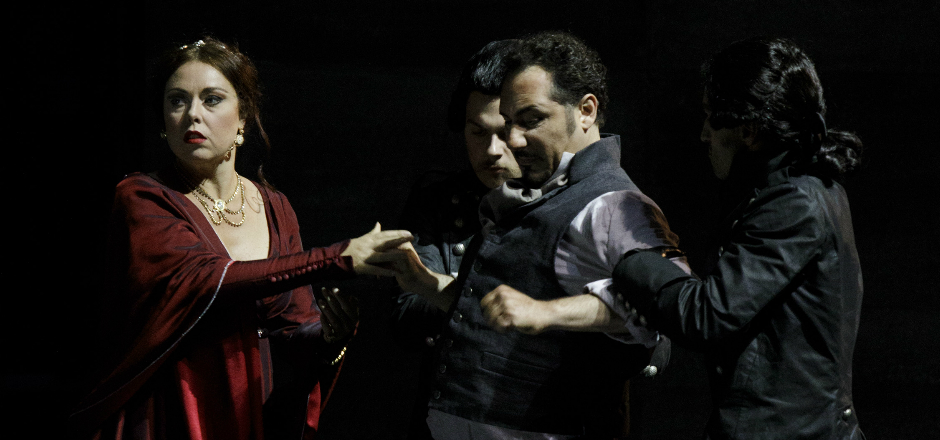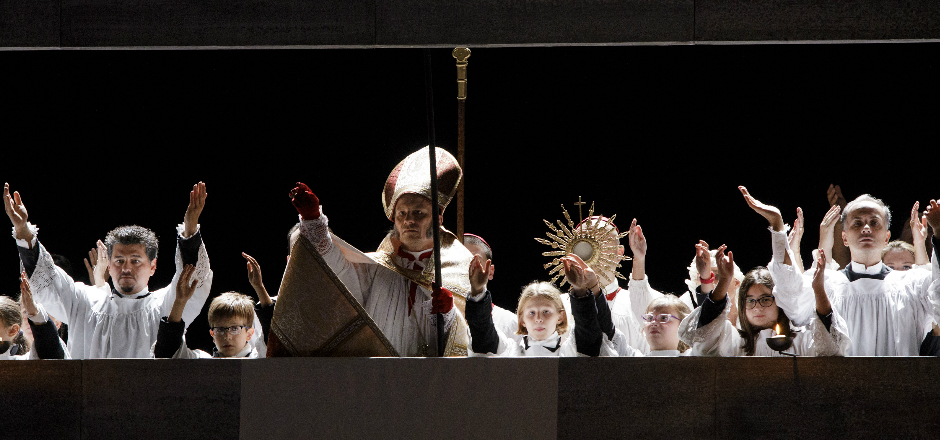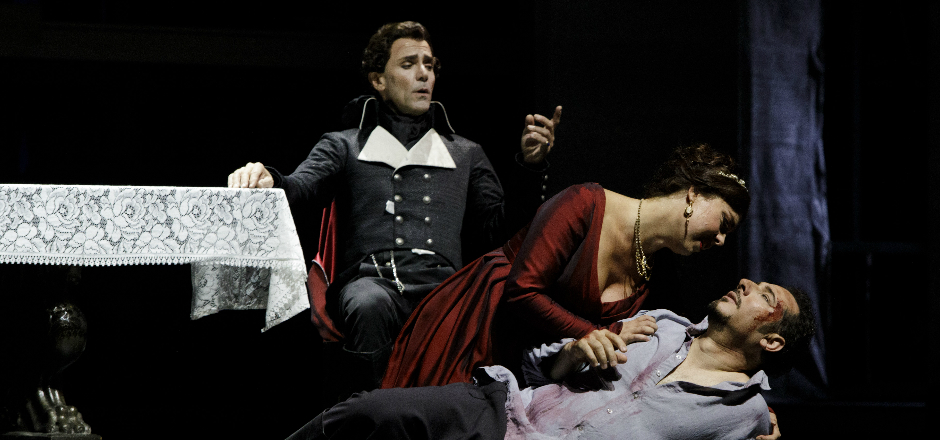Passione Puccini
Opera
Tosca
Giacomo Puccini
Tosca
Opera lirica in tre atti
Libretto di Giuseppe Giacosa e Luigi Illica tratto dal dramma La Tosca di Victorien Sardou
Musica di Giacomo Puccini
Prima rappresentazione: 14 gennaio 1900, Teatro Costanzi, Roma
Nuovo allestimento
Artists
Conductor
Valerio Galli
Director
Federico Bertolani
Scenes
Tiziano Santi
Costumes
Valeria Donata Bettella
Light design
D. M. Wood
Choir director
Lorenzo Fratini
Coro, Coro di voci bianche e Orchestra of the Maggio Musicale Fiorentino
Valerio Galli
Director
Federico Bertolani
Scenes
Tiziano Santi
Costumes
Valeria Donata Bettella
Light design
D. M. Wood
Choir director
Lorenzo Fratini
Coro, Coro di voci bianche e Orchestra of the Maggio Musicale Fiorentino
Floria Tosca
Francesca Tiburzi
Mario Cavaradossi
Stefano La Colla
Il barone Scarpia
Angelo Veccia
Sagrestano
Nicolò Ceriani
Cesare Angelotti
Luciano Leoni
Spoletta
Rim Park
Sciarrone
Jungmin Kim
Un carceriere
Vito Luciano Roberti
Francesca Tiburzi
Mario Cavaradossi
Stefano La Colla
Il barone Scarpia
Angelo Veccia
Sagrestano
Nicolò Ceriani
Cesare Angelotti
Luciano Leoni
Spoletta
Rim Park
Sciarrone
Jungmin Kim
Un carceriere
Vito Luciano Roberti
Act II: Scarpia’s room on the upper floor of the Palazzo Farnese. Wrap in his thoughts, Scarpia is dining. He has asked Tosca to come after the concert in honour of the victory. He is certain that for love of Mario, she will come. He exalts in the idea that soon he will be violently having his way with her. His underling Spoletta enters. He followed Tosca to the villa, but Angelotti was nowhere to be found. Cavaradossi, however, was arrested and is brought to Scarpia. He is questioned, but denies all knowledge of the escaped prisoner. During the interrogation, Tosca comes in. Mario forbids her to reveal anything that she might know. Cavaradossi is closed in the torture chamber, but the baron makes sure that Tosca hears his suffering. The tension mounts, and finally the woman reveals where Angelotti’s whereabouts. The torture stops, and Tosca sees Mario, who has fainted and is bloodied. When he comes to his senses, he is proud that he did not speak, but hearing Scarpia order Spoletta to search for the escapee in the well of the garden, he understands that Tosca has talked, and in his anger, he curses her. However, when another underling, Sciarrone, announces that, contrary to what was believed, that Napoleon won at Marengo, Cavaradossi exults in joy. Scarpia has him sent away to be executed. In the meantime, Spoletta comes with the news that Angelotti was discovered and committed suicide. Now Scarpia and Tosca confront each other. At first the Baron is gallant, proposing a way out, then he becomes more and more brutal. He finally reveals himself. Cavaradossi can be saved only if Floria will give herself up to him. In vain, Tosca tries to convince him otherwise, asking the Madonna to help her. The hate and disdain that Scarpia reads in her eyes, only increases his desire. The time is coming, and the execution is near. In complete despair, Tosca accepts the bribe, but wants to make certain that Mario will be saved. The baron replies that he cannot openly free Cavaradossi. He must undergo a false execution by firing squad. He calls in Spoletta, and in front of Tosca, orders him to do as he promise, adding however in a low voice to do as he did for the Conte Palmieri. Tosca asks the head of police to sign a safe conduct so that she can flee with her lover. After writing the order, Scarpia goes to embrace Tosca, but the woman stabs and kills him with a knife that she took from the table.
Act III: The top of Castel Sant’Angelo. Dawn is near, and from the distance a shepherd sings. Cavaradossi is waiting to be executed, and the warden agrees to bring Tosca his last message. Mario is passionately recalling his love trysts with Tosca, when she appears, and, overcome with joy, shows him the safe conduct signed by Scarpia. Mario does not believe it, but she tells him of the baron’s bribe and also that she killed him with her own hands. She then says how he should act. He must pretend to fall dead and not get up until she makes a sign. The two lovers fantasize about their future. The time has come for the execution. When the soldiers leave, and Tosca tells Mario to get up, in despair she realizes that he has been killed. Scarpia’s atrocious trick was successful. The baron’s assassination has also been discovered, and as the soldiers are about to arrest her, Tosca kills herself by jumping from the ledge.




